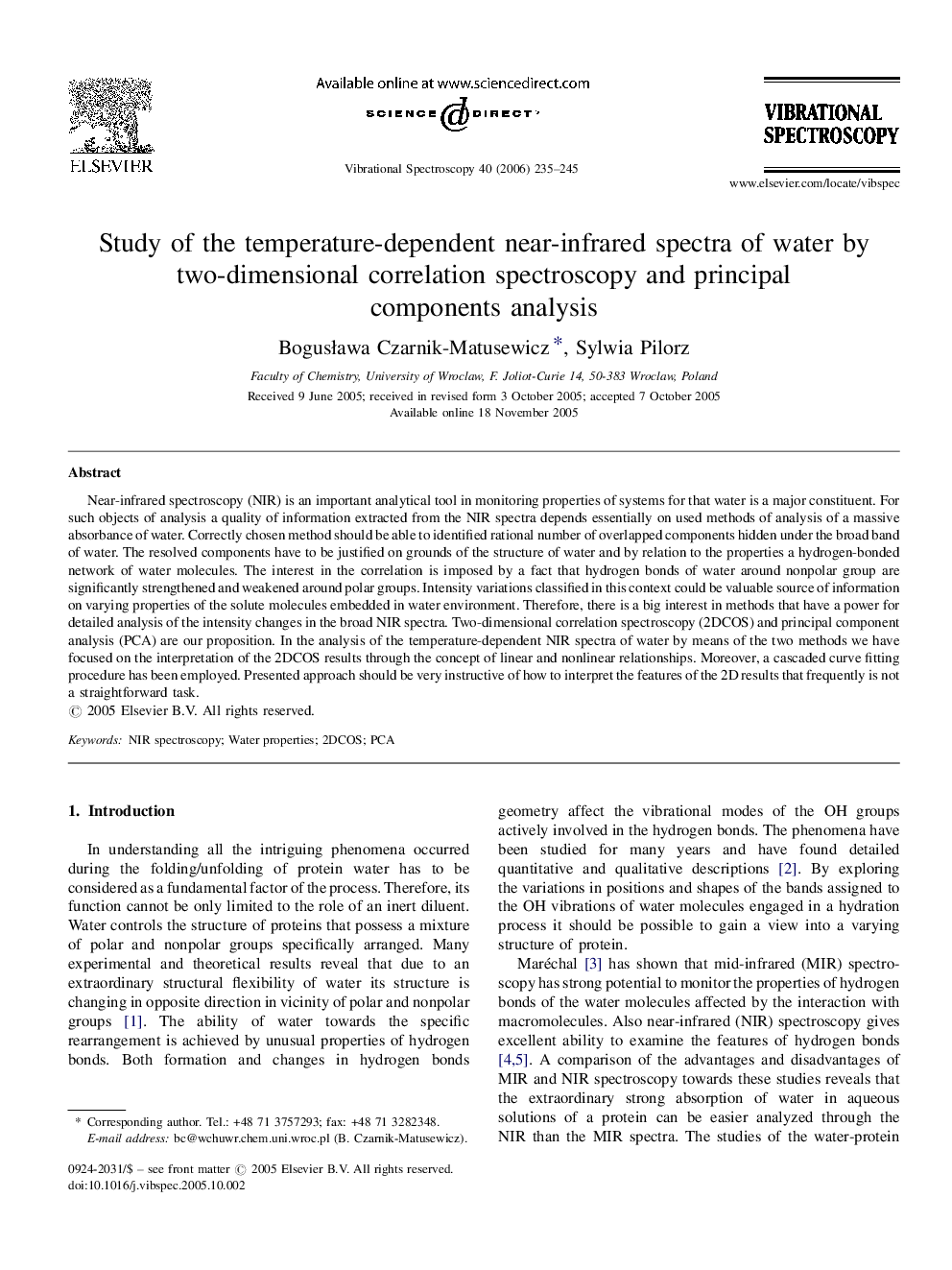| Article ID | Journal | Published Year | Pages | File Type |
|---|---|---|---|---|
| 1249914 | Vibrational Spectroscopy | 2006 | 11 Pages |
Near-infrared spectroscopy (NIR) is an important analytical tool in monitoring properties of systems for that water is a major constituent. For such objects of analysis a quality of information extracted from the NIR spectra depends essentially on used methods of analysis of a massive absorbance of water. Correctly chosen method should be able to identified rational number of overlapped components hidden under the broad band of water. The resolved components have to be justified on grounds of the structure of water and by relation to the properties a hydrogen-bonded network of water molecules. The interest in the correlation is imposed by a fact that hydrogen bonds of water around nonpolar group are significantly strengthened and weakened around polar groups. Intensity variations classified in this context could be valuable source of information on varying properties of the solute molecules embedded in water environment. Therefore, there is a big interest in methods that have a power for detailed analysis of the intensity changes in the broad NIR spectra. Two-dimensional correlation spectroscopy (2DCOS) and principal component analysis (PCA) are our proposition. In the analysis of the temperature-dependent NIR spectra of water by means of the two methods we have focused on the interpretation of the 2DCOS results through the concept of linear and nonlinear relationships. Moreover, a cascaded curve fitting procedure has been employed. Presented approach should be very instructive of how to interpret the features of the 2D results that frequently is not a straightforward task.
